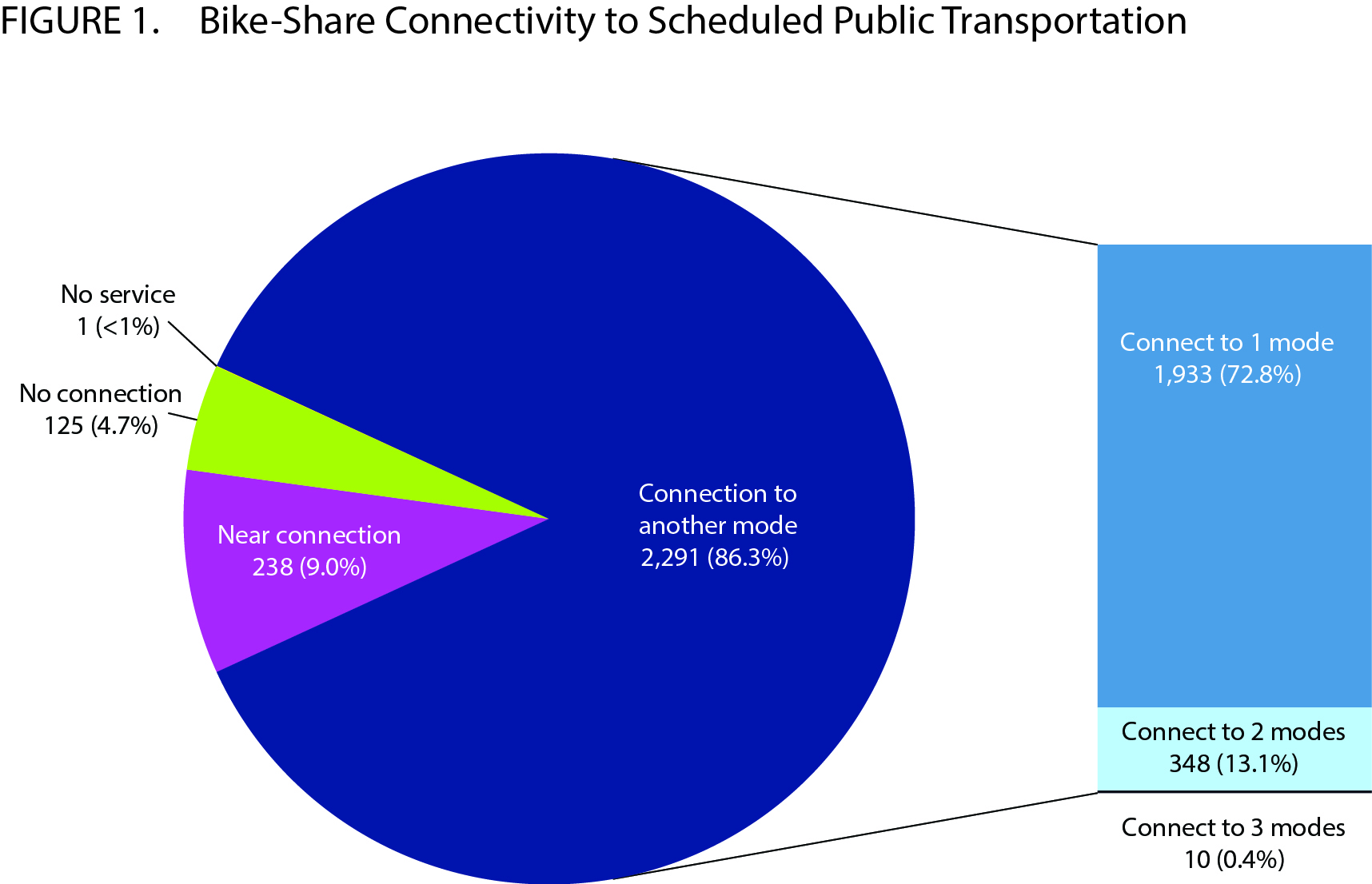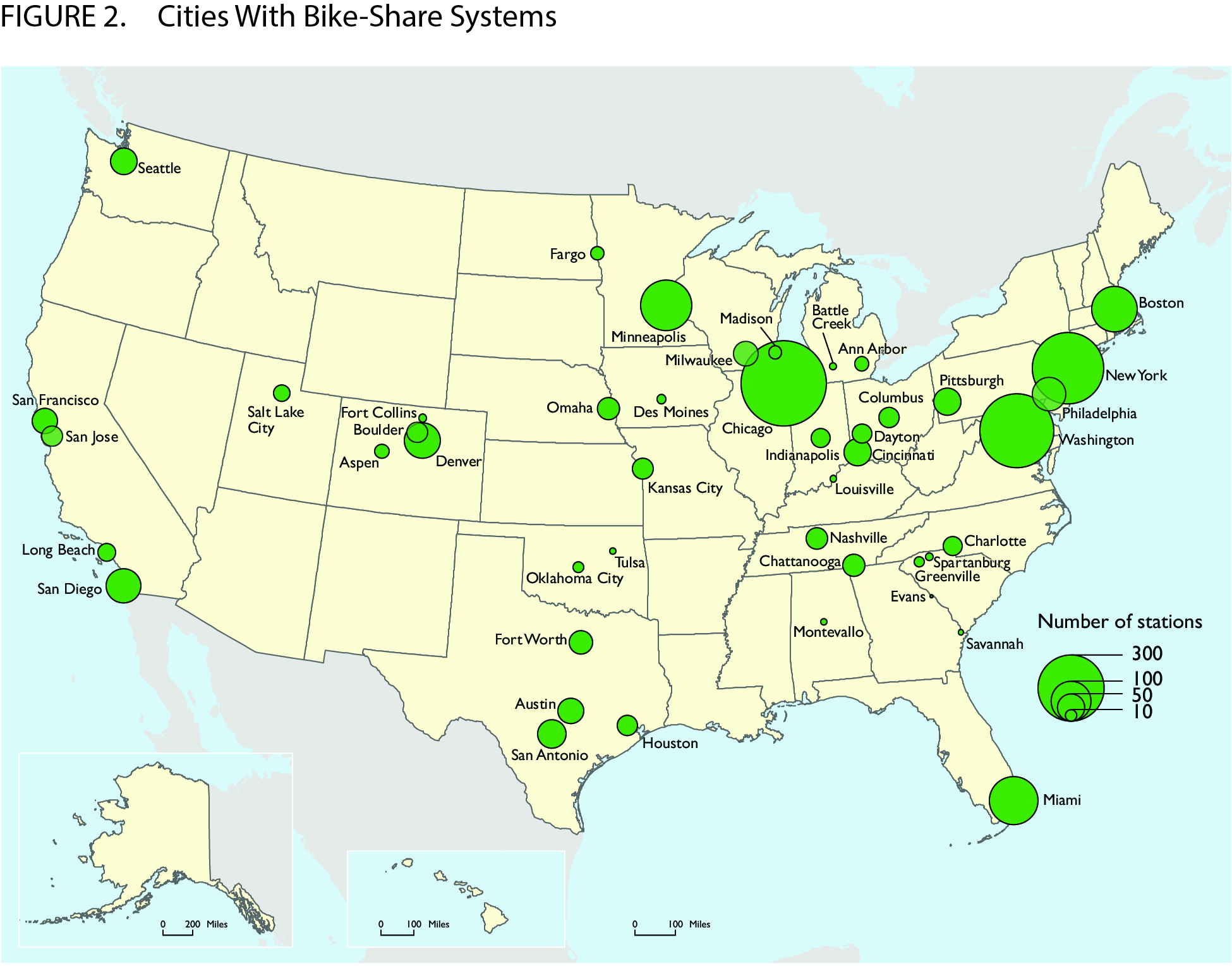BTS 20-16 Monday, April 4, 2016 Contact: Dave Smallen Tel: 202-366-5568
Bike Share Extends Reach of Public Transportation in 65 US Cities BTS Releases Report on Bike-Share Stations in the U.S.
Forty-six bike share systems in the U.S. offer a total of 2,655 bike share stations in 65 US cities, with most in close proximity to transit stops, according to a new report Bike-Share Stations in the U.S. issued today by the U.S. Department of Transportation’s Bureau of Transportation Statistics. These numbers are as of February 2016.
Source: U.S. Department of Transportation, Bureau of Transportation Statistics, Intermodal Passenger Connectivity Database (as of Feb. 2, 2016)
The BTS report shows that of 2,655 bike-share stations, 86.3 percent (2,291) are located within one block of a scheduled public transportation mode (Figure 1). These connections extend the transportation network by offering a means for reaching places with scheduled public transportation, such as rail stations and local bus stops, and a means for reaching destinations not served by scheduled public transportation.
Transit bus is the most typical connection, with 84.2 percent (2,236) of bike-share stations located a block or less from a transit bus stop.
In addition to the bike-share stations located within one block of public transportation, another 9.0 percent (238) connect within 1 to 2 blocks while 4.7 percent (126) either have no connection or no connection to a scheduled public transportation mode within 2 blocks.
BTS’ Intermodal Passenger Connectivity Database (IPCD) provides the locations of U.S. bike-share stations and their connectivity levels to scheduled public passenger transportation modes, such as air and intercity and transit modes (bus, ferry, and rail). A bicycle (bike) sharing system is a service where bikes are available for shared use to individuals on a short-term basis.
Source: U.S. Department of Transportation, Bureau of Transportation Statistics, Intermodal Passenger Connectivity Database (as of Feb. 2, 2016)
Bike-share generally uses new mobile communications technologies to offer a transportation option. In most cases, users pay a membership fee to grab a bike at any outdoor docking location in the system and then return the bike to any outdoor docking location within that system. Usually the first half-hour is free and time-based charges increase to encourage short-term use.
A total of 46 bike-share systems operate the 2,655 stations in the U.S. Of the 46 bike-share systems, five operate across one or more cities within a metropolitan area. Capital Bikeshare, for example, serves 11 cities in the Washington DC-Arlington-Alexandria Metropolitan Area, and Cincinnati Red Bike serves four cities in the Cincinnati Metropolitan Area (Figure 2).
See Bike-Share Stations in the U.S. for more details about bike-share stations’ connections to public transportation. The IPCD is a nationwide data table of 7,000 rail, air, bus and ferry passenger transportation terminals. The objective of the IPCD is to provide data to use in measuring the degree of intermodal connectivity in the passenger transportation system.
You are subscribed to DOT News for Department of Transportation. This information has recently been updated, and is now available. |



